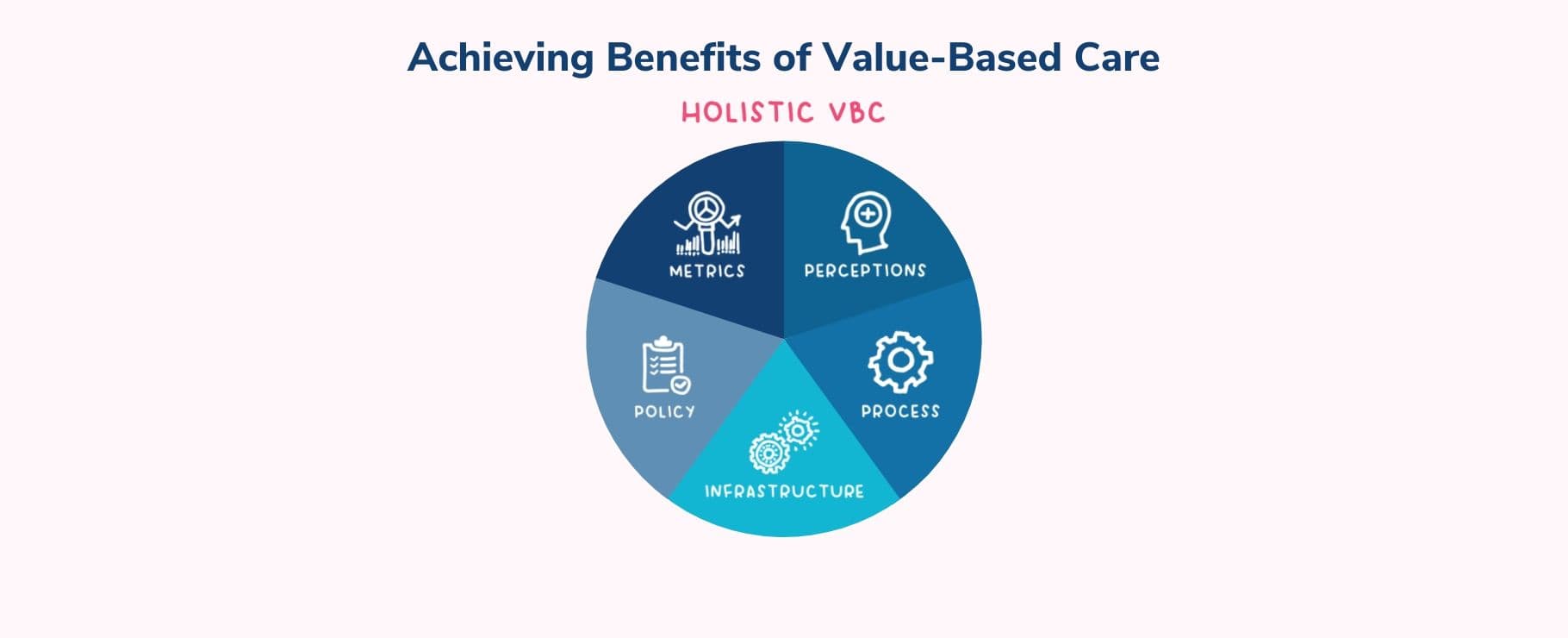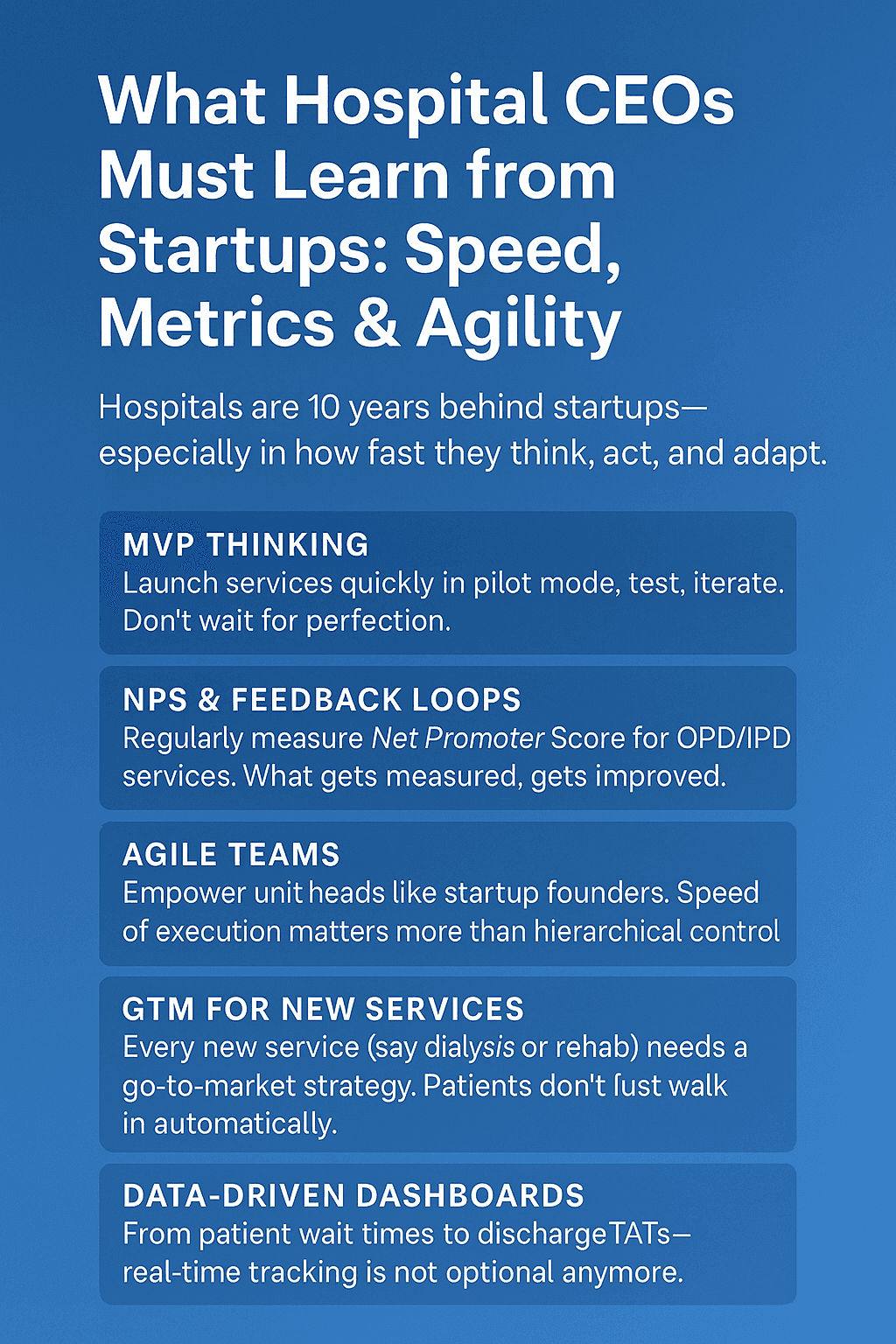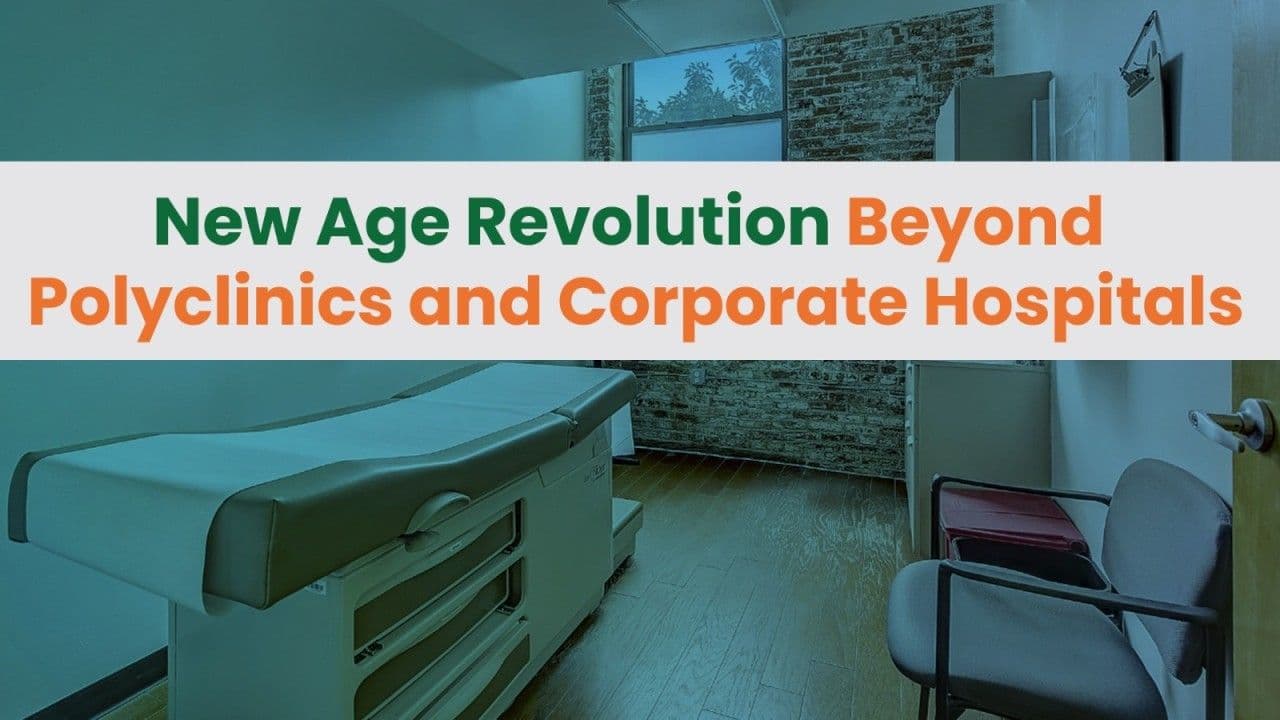🏥 Hospital Boards Are Getting It Wrong If Your KPI is OPD Footfall, You’re Missing the Bigger Picture

Across Tier-2 and Tier-3 towns in India, many hospitals still rely on legacy metrics—OPD footfall, bed occupancy, and monthly billing—as their primary indicators of success. These numbers may look good on PowerPoint, but they fail to capture the essence of modern healthcare: patient outcomes, experience, safety, and continuity of care.
In an era where patient expectations are rising and healthcare is undergoing a quiet revolution, relying solely on outdated KPIs is not just ineffective—it’s dangerous.
📉 The Problem with Traditional Metrics
Let’s be honest: high OPD footfall doesn’t always mean quality care. A hospital might see hundreds of patients daily, but:
- Are patients returning or recommending you?
- Are clinical protocols being followed?
- Is your staff engaged or just overworked?
- Are patients getting timely, safe, and dignified care?
High occupancy may indicate poor discharge planning. High revenue might be driven by unnecessary investigations or repeat visits for unresolved issues.
In short, these metrics are volume-based, not value-based.
🔁 The Global Shift: From Volume to Value
Healthcare worldwide is moving toward value-based care—a model that rewards outcomes, quality, and patient experience over mere activity.
And this isn’t just a Western phenomenon. It’s happening in India too.
💡 Example: Qure.ai – Value-Driven Tech in Action
Mumbai-based healthtech company Qure.ai is transforming diagnostics through AI tools that detect conditions like TB, lung cancer, and strokes. What sets them apart isn’t just the technology—it’s the demonstrable impact on speed and accuracy of diagnosis. Their goal? A public IPO in two years, backed by metrics that go far beyond user volume. It’s a case study in what happens when you measure outcomes instead of only usage.
(Source: Reuters)
📈 The Indian Context: SME IPOs Tell the Story
In recent months, several small and mid-sized hospitals have successfully raised funds through SME IPOs. Their appeal to investors? Focus on quality, scalability, and value.
🔸 Broking Hit: Broach Lifecare Hospital (Gujarat)
Operating just 40 beds, this two-branch hospital saw its IPO oversubscribed 150x, with a nearly 100% listing gain. The reason? A clear roadmap toward value-driven growth—better infrastructure, improved patient experience, and tech integration.
🔸 Shanmuga Hospital (Salem, Tamil Nadu)
This 151-bed hospital went public through the SME route, raising capital for quality enhancement and upgraded diagnostics. Their IPO drew strong institutional interest despite moderate footfall numbers—showing that investors value clinical strength and operational discipline over just patient counts.
🔸 Nephro Care India
Planning a multispecialty hospital and dialysis chain, Nephro Care raised ₹20,000 crore via IPO applications. Their promise? Better clinical governance, specialised care, and lower readmission rates.
The writing is on the wall: Value sells. Outcomes matter. Volume is passé.
🔍 KPIs That Actually Matter
So, what should your hospital’s dashboard actually track?
✅ Clinical Outcomes
- Surgical success rates
- Infection control statistics
- Emergency response time
- Readmission rates
✅ Patient Satisfaction Metrics
- Net Promoter Score (NPS)
- Complaints and grievance resolution rate
- Post-discharge follow-up compliance
✅ Operational Quality Indicators
- Average length of stay (ALOS)
- Time to triage/treatment in emergencies
- Utilisation of clinical protocols (e.g., for sepsis, chest pain)
✅ Staff Experience and Safety
- Staff turnover and burnout levels
- Compliance with hand hygiene, checklists, documentation
✅ Digital and Continuity Measures
- Use of EMR and digital tracking
- Repeat visit correlation with initial treatment
- Patient retention and community engagement
🛠️ Making the Shift: From Metrics to Meaning
Many hospital owners in Tier-2 cities argue, “We don’t have the systems for this,” or “Our patients only care about price.”
That’s a myth.
You don’t need JCI certification to begin measuring what matters. Start small:
- Conduct internal clinical audits.
- Use basic digital tools (like Google Forms or WhatsApp surveys) for feedback.
- Train your staff on communication, empathy, and SOPs.
- Engage patients beyond discharge—offer teleconsults, share care plans.
If you still rely on a printed register to track footfall, but have no insight into why patients leave or don’t return—your metrics are costing you trust.
🚀 Why Boards Must Take the Lead
Hospital boards in Tier-2 towns often comprise doctors, local businessmen, or community leaders. They bring experience—but many still equate growth with patient load.
The board must evolve into a strategic body, not just a cost-control committee. It must:
- Define quarterly goals linked to clinical and patient KPIs
- Review dashboards that balance revenue with care quality
- Encourage leadership development in operations and quality
🔚 Final Word: Stop Counting People, Start Creating Impact
A hospital that focuses on only OPD and billing is like a school measuring success by the number of students enrolled—not how many passed, learned, or succeeded in life.
Busy hospitals are not necessarily good hospitals. The future belongs to institutions that treat fewer patients—but treat them better.
📊 Is your hospital counting heads—or improving lives?
Let’s help you build a dashboard that reflects reality, not just receipts.
#HospitalConsulting #ValueBasedCare #HealthcareLeadership #Tier2India #PatientCentricCare #HealthcareKPIs #HospitalBoards #SMEIPO #ClinicalExcellence #HospitalGrowth
Related Articles

Generic Medicines & the Rise of Jan Aushadhi Kendras in India: Promise, Pitfalls, and the Path Forward
In a country where millions fall into poverty due to healthcare costs, Jan Aushadhi Kendras have emerged as a lifeline — offering quality-assured generic medicines at 50–80% lower prices. Over 14,000 such stores now serve India’s most vulnerable. Yet, as journalist Durgesh Nandan Jha recently reported, the shift toward generics has sparked a nationwide debate: Is affordability enough without guaranteed quality? While many healthcare leaders hail the model as a landmark in access and equity, others warn of regulatory gaps, poor pharmacovigilance, and silent therapeutic failures. As one doctor put it, “A ₹1 paracetamol that doesn’t work is not affordable — it’s potentially fatal.” This article explores the ground reality behind the generics movement — blending data, diverse expert opinions, and a call to action: India must now evolve from “cheap drugs” to “trusted generics.”

𝗪𝗵𝗮𝘁 𝗛𝗼𝘀𝗽𝗶𝘁𝗮𝗹 𝗖𝗘𝗢𝘀 𝗠𝘂𝘀𝘁 𝗟𝗲𝗮𝗿𝗻 𝗳𝗿𝗼𝗺 𝗦𝘁𝗮𝗿𝘁𝘂𝗽𝘀: 𝗦𝗽𝗲𝗲𝗱, 𝗠𝗲𝘁𝗿𝗶𝗰𝘀 & 𝗔𝗴𝗶𝗹𝗶𝘁𝘆
In today’s rapidly evolving healthcare landscape, traditional hospitals cannot afford to operate at yesterday’s pace. While startups are innovating at lightning speed—launching features, iterating on feedback, and scaling rapidly—many hospitals are still stuck in bureaucratic inertia, delayed decisions, and outdated management models. This article explores how hospital CEOs can adopt startup principles to drive operational efficiency, improve patient outcomes, and remain competitive. From MVP-based service launches to real-time dashboards, agile leadership structures, and data-driven decision-making, it outlines a practical roadmap for hospital leaders who are ready to embrace the mindset of a modern, patient-centric enterprise. The future of healthcare belongs to those who can move fast, measure right, and adapt with precision. It's time hospital leadership started thinking like entrepreneurs.

दिखावे के ज़माने में टूटते लोग: सोशल मीडिया, AI और हमारी अधूरी ज़िंदगी
सोशल मीडिया के इस तेज़ और चमकदार युग में, जहाँ हर मुस्कान में फिल्टर और हर रिश्ते में confusion है, वहाँ असली खुशी और सुकून दूर होता जा रहा है। हम सब दिखते बहुत 'happy' हैं, लेकिन अंदर से थके हुए, उलझे हुए और कभी-कभी टूटे हुए भी। AI से बात करना आसान हो गया है, पर अपने दिल की बात किसी अपने से कहना अब भी सबसे मुश्किल काम लगता है। ये लेख उसी नकली हँसी के पीछे छिपे दर्द, रिश्तों की उलझनों और mental health की सच्चाई को उजागर करता है – एक तंज, एक सच और एक कोशिश, कि शायद कोई पढ़कर रुक जाए... और खुद से या किसी से बात कर ले।

Syllabus ke bahar ka sawaal !
Busy in month-end closing? I bet you're deep in numbers: revenue, COGS, ROAS, margins, CAC, and all those financial metrics that keep the business world running. But let me ask you this: what about the numbers that truly matter? The numbers that can mean the difference between life and death?

Co-Working Spaces for Doctors: The New Age Revolution Beyond Polyclinics and Corporate Hospitals
India’s healthcare system is witnessing rapid transformation, and doctors, particularly those aiming to establish independent practices, face unprecedented challenges. The traditional polyclinic model, once seen as a practical solution for medical professionals looking to share resources and offer multi-specialty services under one roof, is now showing its limitations in a tech-driven world. Meanwhile, corporate hospitals and pharmacy-attached clinics are also proving restrictive for doctors, especially for those seeking autonomy, flexibility, and modern tools for patient care. Enter the era of co-working spaces for doctors, a dynamic business model that offers not only shared real estate but also a comprehensive tech-enabled ecosystem for doctors to thrive. From handling licensing and compliance to offering digital infrastructure for online appointments, telemedicine, CRM systems, and marketing solutions, these co-working spaces represent the next evolution in medical practice. In this article, we’ll explore the urgent need for such spaces in India, provide a detailed comparison between the old polyclinic model and new-age co-working spaces, and explain why this concept is better suited for doctors today—especially for specialists moving to suburban and smaller district towns.